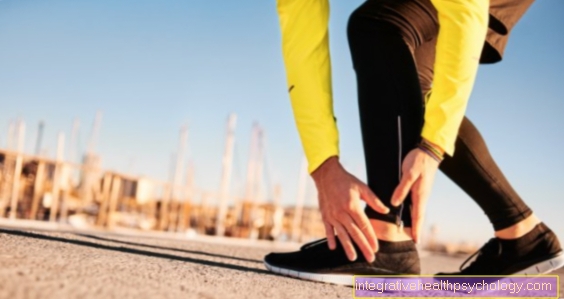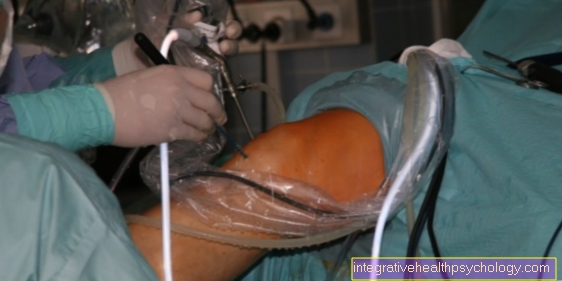Seated rowing with the expander
introduction
Well-developed back muscles not only provide visual stimuli, but are also a preventive measure to prevent back problems.
It supports the torso in all everyday movements and thus enables pain-free movements. The back muscles contract with almost all static and dynamic movements (except for pure movements of the extremities). According to statistical studies, back problems or poor posture are often caused by a lack of muscles in the back and stomach area. It makes sense to start with targeted training in two ways.
muscles involved
- Rhomboid muscle (M. rhomboideus minor et mayor)
- Trapezius (M. trapezius)
- Latissimus (M. latissimus dorsi)
- large round muscle (M. teres minor)
Motion description

The athlete sits on a mat or other soft surface with an upright upper body and slightly bent knees.The two ends of the band are fastened around the wrists, the middle runs around the feet so that it cannot slip off when tensioned. Always taking into account the upright upper body posture, the arms are brought along the body to the stomach. When held forward, the arms are approximately in extension, while when returning they are bent slightly below ninety degrees. The elbows are close to the body. When moving the arms forward, the upper body also moves slightly forward. It is important here that you do not hump but remain under tension.
The intensity can be varied based on the tension of the expander. To increase the intensity you can grip the expander tighter or hold it twice. Another variation is whether you have pulled your legs up slightly or even stretched them completely. A higher level of coordination is required here. The same exercise can be done while standing. With the whole body in tension and with the knees slightly bent, the arms perform exactly the same movement as in the sitting position. The expander can be easily attached to doors etc.
Further information
Here you can find more information about back muscle training with the expander
- Rowing standing with the expander
- Hyperextension with the expander
- Standing back isolator with the expander
Back to the expander training overview





























